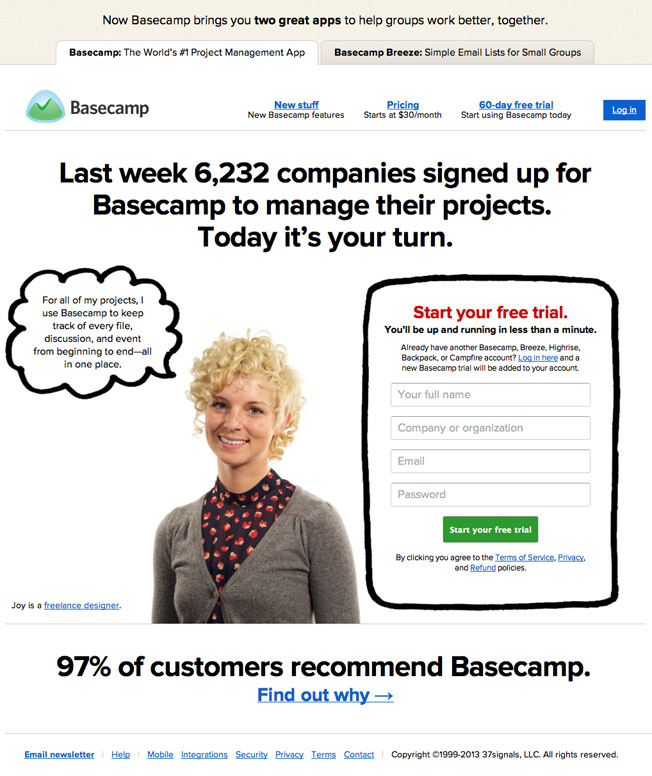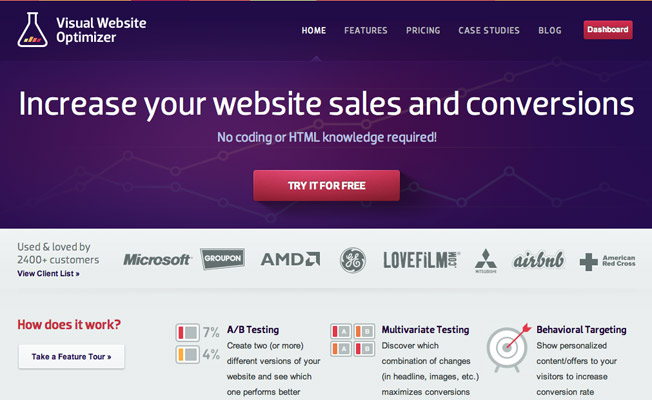Almost regardless of what you do, you have bigger competitors.
There’s a blog that has more readers, an e-commerce site with more customers, or a brand with better name recognition.
Usually, one or two of them are clear market leaders.
It’s tempting to think they got there because the planets were aligned and the gods were smiling at them.
And sure, fortune just might’ve played a role in their growth.
But their continued success isn’t about luck.
Instead, they have the best value propositions, and they know how to use them.
What makes you valuable?
People won’t ever buy from you if they don’t even understand why they should pay attention to you. And they notice you only if you have a strong value proposition.
The usual definition of value proposition is crippled. It describes it as “a promise of the value you can deliver.”
Value proposition, if you define it like that, is a decent—but incomplete—internal tool that can guide your decisions to the right general direction. But nothing more.
A more useful definition of value proposition is “a believable collection of the most persuasive reasons people should notice you and take the action you’re asking for.”
This way, it guides your decisions much more clearly and can be used as the basis for marketing messages.
If you don’t have a strong value proposition, people don’t have good reasons to do either of those.
For example, if your online bookstore has average selection, decent prices, delivery, a guarantee, good customer service, and a website, why would anyone buy from you? There’s surely a competitor who beats you in at least some of those aspects.
You don’t have to be the best in every way. Sure, it’s great if you are. But realistically, it’s difficult enough to be the best in one way.
However, if you’re the best in at least one way, you’re the best option for the people who value that aspect.
Apple doesn’t have the largest product selection. Amazon isn’t the most prestigious. Tiffany’s isn’t the cheapest.
People buy from them for other reasons.
So, if your bookstore has the largest selection, for example, but the other things are “just average,” the people who value a large selection have a reason to buy from you.
Something has to make you the best option for your target customers.
Otherwise, they have no good reason to buy what you’re selling.
Can you prove that?
If you say, “My pizza is the best in the world,” will people flood your restaurant?
No. They won’t believe you.
Without proof, you can’t say much before it starts to sound like “marketing talk,” which people don’t pay almost any attention to (nor do they remember it).
For example, I recently saw a site where someone claimed to be “the secret weapon of digital marketing for the most successful companies in the world.” Needless to say, I doubt anyone can take that seriously when nothing supports the idea.
Being the best isn’t enough. People need to believe you’re the best option for them.
As long as you don’t prove your claims, people are unlikely to really believe them. And your value proposition becomes useless.
You can use studies, testimonials, and common sense, among other methods, to prove your claims.
Basecamp uses social proof to validate their main claim “World’s #1 Project Management App.” The two specific numbers make the claim believable (“6,232 companies” and “97% recommend”).
Impressive numbers can be the right choice (e.g., Basecamp), but they don’t always work.
Numbers can prove popularity and other quantitative things.
But when you’re a “trusted expert,” saying, “1,000 people consider me an expert” won’t work.
Instead, a few expert testimonials make the idea credible. They can even take away the need for you to make any claims—the testimonials can make the claims for you.
Similarly, you can use testimonials to build your product’s overall perceived value and take away the last doubt people might feel about your promises.
StudioPress shows well-known people praising their products.
You need to pick the right way to prove your promises. Otherwise they’re not believable.
Usually, since you’re not just trying to make one claim about you and your products, you need to use different methods to prove each promise.
People can’t read your mind
Many businesses don’t help people see what sets the company apart from its competitors.
They are better than others, and they could prove it.
They just don’t do it.
Instead, they try to persuade people with general promises, corporate babble, and feature lists. Or they just ask you to buy before really even telling you what they sell.
If your website doesn’t clearly tell visitors what makes you worth their attention (and money), they don’t spend the time to figure it out on their own.
It’s your job to hit people in the head with what makes you different and worth attention.
Visual Website Optimizer doesn’t waste time; the home page is very clear about what you can get from them.
The headline might not be as creative as many people seem to think is necessary. Instead, it gets the job done.
Besides, “creative” headlines are often just plain confusing.
You’ll never, ever hear anyone say, “It’s too easy to understand what your site is about.”
But if your site is even a bit confusing, your bounce rate will skyrocket.
It’s not enough to have a headline that’s clear about what makes you different—people won’t really understand your value proposition that easily.
You need to restate it everywhere.
If you say something just once, people can easily forget it, or they don’t realize how important it is.
So, when you know what people need to believe about you and your products, don’t put all the pressure on just one headline; do everything you can to make it clear to people.
The Iconic, an Australian online shoe store, uses the search box to remind people of their big selection.
When people understand why they should buy your product instead of any other, they’ll do it.
But first you need to figure out what makes you different from your competitors and the best choice for your target customers.
Your value proposition
When you start creating (or refining) your value proposition, the first step is to find the core of it.
The core of your value proposition is made up of the ideas that make you clearly the best choice for people.
It’s not everything there is to a strong, refined value proposition (unlike some of the basic definitions would have you believe). But it’s the part that makes the biggest difference.
Those few sentences can give you an unfair advantage.
Using them well can make you the market leader; the current leaders got there because they knew how to do it.
If you have any questions, or you’d like to share your value proposition, the comments are open for a reason.
About the Author: Right now, Peter Sandeen is probably knee-deep in snow (he lives in Finland) with his wife and dogs. But you can download his 5-step system for finding the core of your value proposition and landing page checklist to improve your conversion rates.



Comments (35)